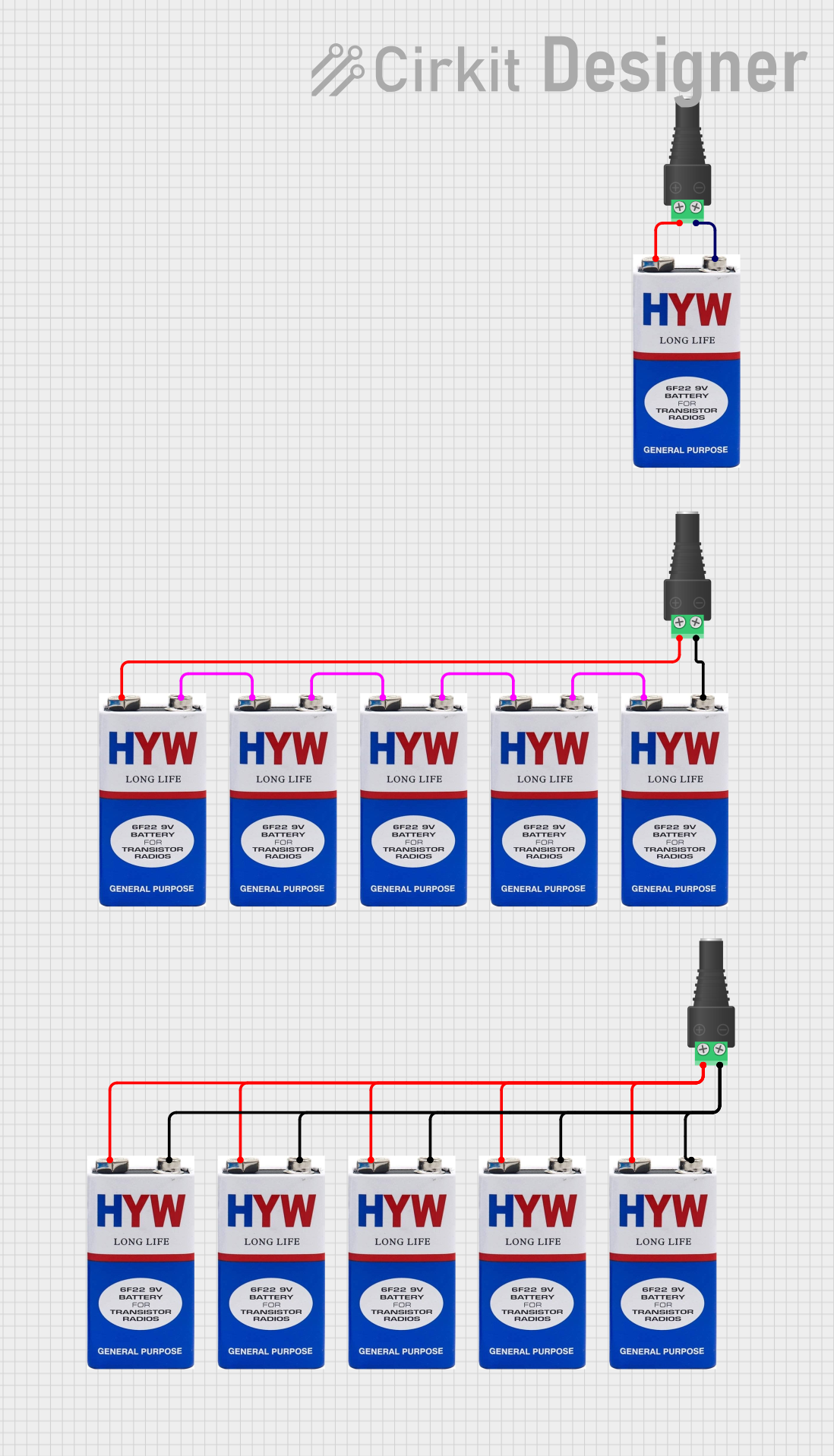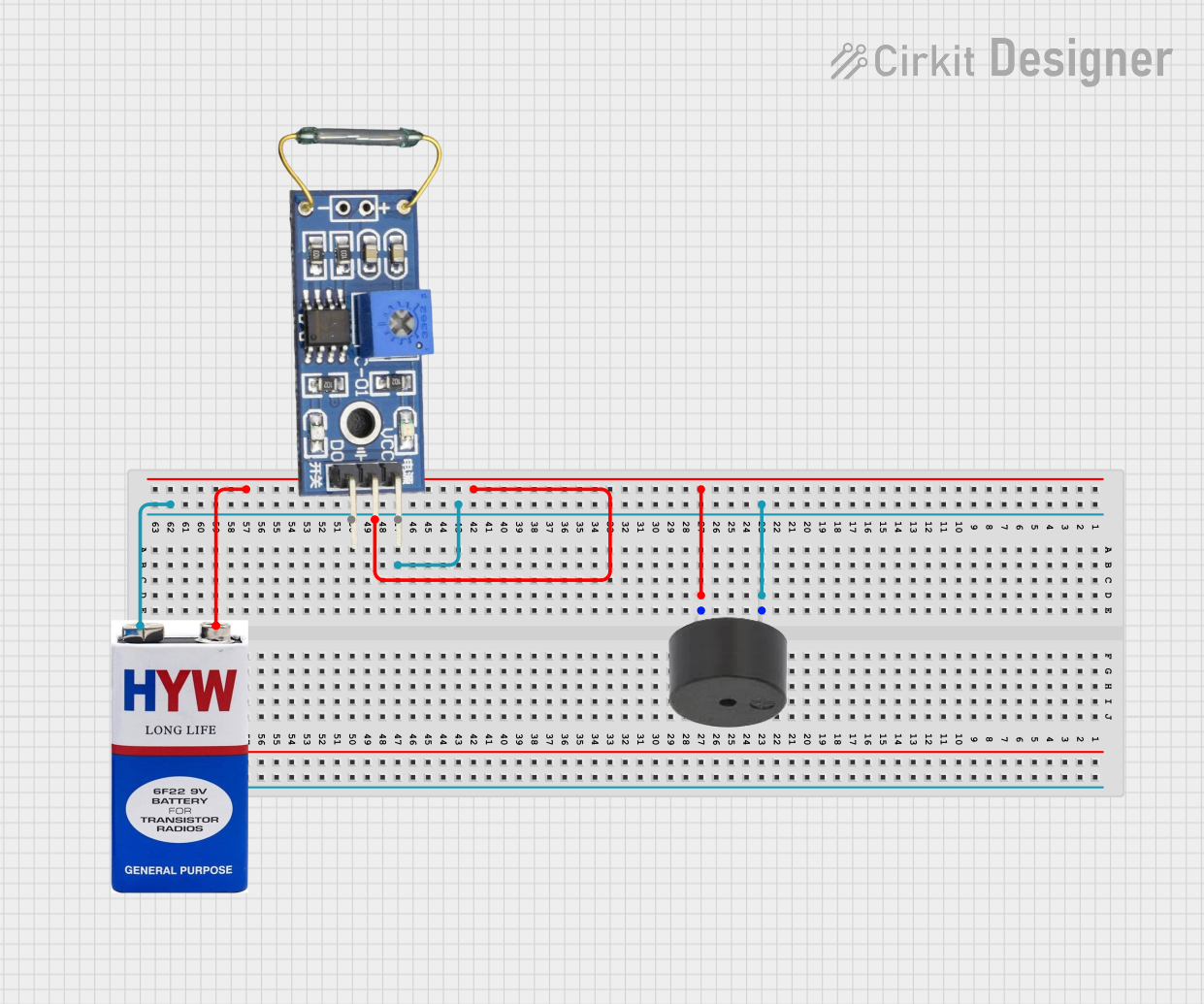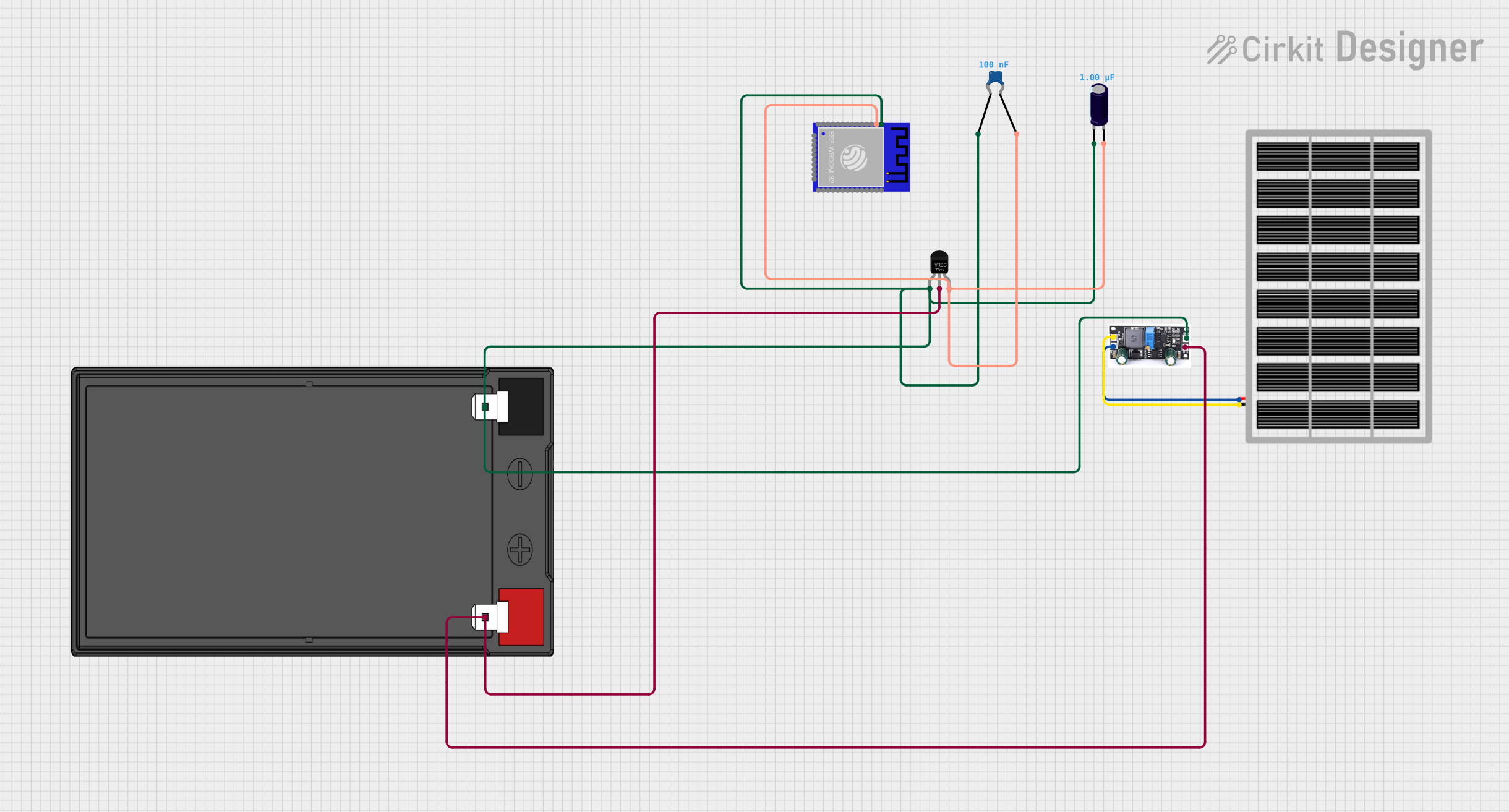
How to Use 9V RECHARGABLE BATTERY: Examples, Pinouts, and Specs

 Design with 9V RECHARGABLE BATTERY in Cirkit Designer
Design with 9V RECHARGABLE BATTERY in Cirkit DesignerIntroduction
A 9V rechargeable battery is a type of battery that can be recharged and reused multiple times, providing a nominal voltage of 9 volts. It is an eco-friendly and cost-effective alternative to disposable batteries, making it a popular choice for powering a wide range of electronic devices. These batteries are commonly used in smoke detectors, remote controls, wireless microphones, portable instruments, and other low-power devices. Their ability to be recharged significantly reduces waste and long-term costs.
Explore Projects Built with 9V RECHARGABLE BATTERY

 Open Project in Cirkit Designer
Open Project in Cirkit Designer
 Open Project in Cirkit Designer
Open Project in Cirkit Designer
 Open Project in Cirkit Designer
Open Project in Cirkit Designer
 Open Project in Cirkit Designer
Open Project in Cirkit DesignerExplore Projects Built with 9V RECHARGABLE BATTERY

 Open Project in Cirkit Designer
Open Project in Cirkit Designer
 Open Project in Cirkit Designer
Open Project in Cirkit Designer
 Open Project in Cirkit Designer
Open Project in Cirkit Designer
 Open Project in Cirkit Designer
Open Project in Cirkit DesignerTechnical Specifications
Below are the key technical details of a typical 9V rechargeable battery:
| Parameter | Specification |
|---|---|
| Nominal Voltage | 9V |
| Capacity | 200mAh to 600mAh (varies by model) |
| Chemistry | Lithium-ion (Li-ion) or Nickel-Metal Hydride (NiMH) |
| Recharge Cycles | 300 to 1000 cycles |
| Charging Voltage | 10.8V to 12V (depending on charger) |
| Charging Current | 50mA to 200mA (varies by charger) |
| Discharge Current | Up to 1A (depending on model) |
| Operating Temperature | 0°C to 45°C (charging) / -20°C to 60°C (discharging) |
| Dimensions | 48.5mm x 26.5mm x 17.5mm (standard 9V size) |
| Weight | 30g to 50g (varies by model) |
Pin Configuration and Descriptions
The 9V rechargeable battery has two terminals:
| Terminal | Description |
|---|---|
| Positive (+) | Supplies the positive voltage output. Connect this to the positive terminal of your circuit. |
| Negative (-) | Supplies the ground (negative) connection. Connect this to the ground terminal of your circuit. |
Usage Instructions
How to Use the 9V Rechargeable Battery in a Circuit
- Check Compatibility: Ensure the device you are powering is compatible with a 9V power source.
- Connect Terminals:
- Connect the positive terminal of the battery to the positive input of your circuit.
- Connect the negative terminal of the battery to the ground of your circuit.
- Use a Battery Holder: For safety and convenience, use a 9V battery holder to secure the battery and make connections easier.
- Monitor Voltage: Use a multimeter to periodically check the battery voltage. Recharge the battery when the voltage drops below 7.2V to prevent over-discharge.
Important Considerations and Best Practices
- Charging: Always use a charger designed for 9V rechargeable batteries. Overcharging or using an incompatible charger can damage the battery.
- Avoid Over-Discharge: Discharging the battery below its minimum voltage (typically 6V to 7.2V) can reduce its lifespan.
- Storage: Store the battery in a cool, dry place when not in use. Avoid exposing it to extreme temperatures or humidity.
- Polarity: Ensure correct polarity when connecting the battery to a circuit. Reversing the polarity can damage the battery and the connected device.
- Recycling: Dispose of old or damaged batteries at a certified recycling facility to minimize environmental impact.
Example: Using a 9V Rechargeable Battery with an Arduino UNO
To power an Arduino UNO with a 9V rechargeable battery, follow these steps:
- Connect the positive terminal of the battery to the VIN pin on the Arduino.
- Connect the negative terminal of the battery to the GND pin on the Arduino.
Here is a simple Arduino sketch to blink an LED while powered by the 9V rechargeable battery:
// This code blinks an LED connected to pin 13 of the Arduino UNO.
// Ensure the 9V rechargeable battery is properly connected to the Arduino.
void setup() {
pinMode(13, OUTPUT); // Set pin 13 as an output pin
}
void loop() {
digitalWrite(13, HIGH); // Turn the LED on
delay(1000); // Wait for 1 second
digitalWrite(13, LOW); // Turn the LED off
delay(1000); // Wait for 1 second
}
Troubleshooting and FAQs
Common Issues and Solutions
Battery Drains Quickly:
- Cause: The battery may not be fully charged or has reached the end of its lifespan.
- Solution: Recharge the battery fully. If the issue persists, consider replacing the battery.
Battery Does Not Charge:
- Cause: The charger may be incompatible or faulty.
- Solution: Use a charger specifically designed for 9V rechargeable batteries. Check the charger's output voltage and current.
Device Does Not Power On:
- Cause: Incorrect polarity or insufficient battery voltage.
- Solution: Verify the battery's polarity and ensure the voltage is above the device's minimum requirement.
Battery Overheats During Use:
- Cause: Excessive current draw or a short circuit in the connected device.
- Solution: Check the device's current requirements and ensure they are within the battery's limits. Inspect the circuit for shorts.
FAQs
Q: How long does it take to charge a 9V rechargeable battery?
A: Charging time depends on the battery's capacity and the charger's current. For example, a 300mAh battery charged at 100mA will take approximately 3 to 4 hours.
Q: Can I use a 9V rechargeable battery in place of a disposable 9V battery?
A: Yes, as long as the device is compatible with the slightly lower voltage of a rechargeable battery (typically 8.4V to 9V when fully charged).
Q: How do I know when the battery needs recharging?
A: Use a multimeter to check the voltage. Recharge the battery when the voltage drops below 7.2V to prevent over-discharge.
Q: Can I leave the battery in the charger overnight?
A: It is not recommended unless the charger has an automatic cutoff feature to prevent overcharging. Always follow the charger's instructions.